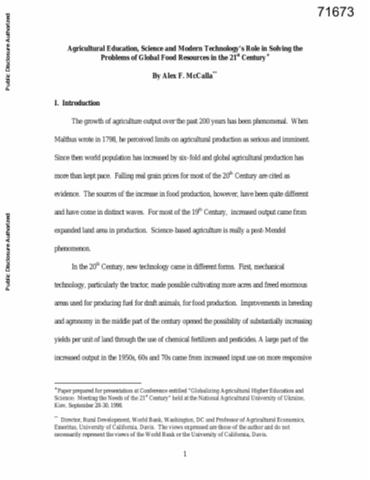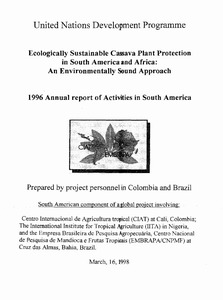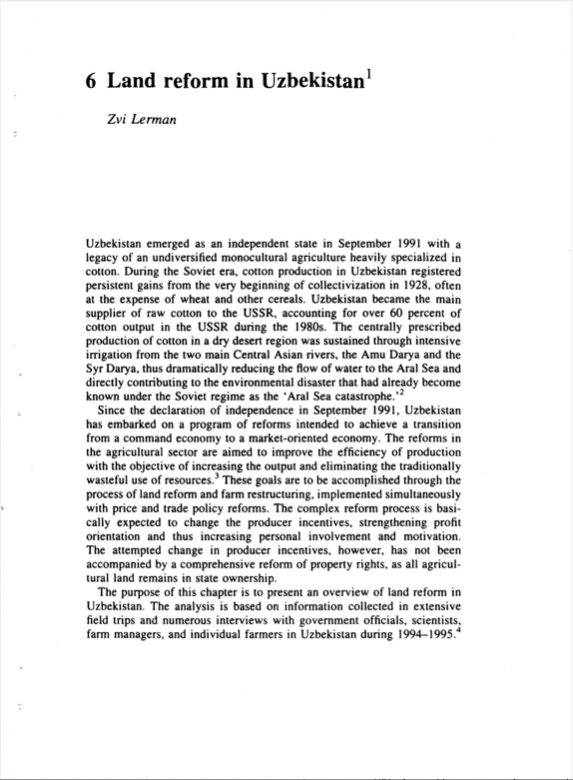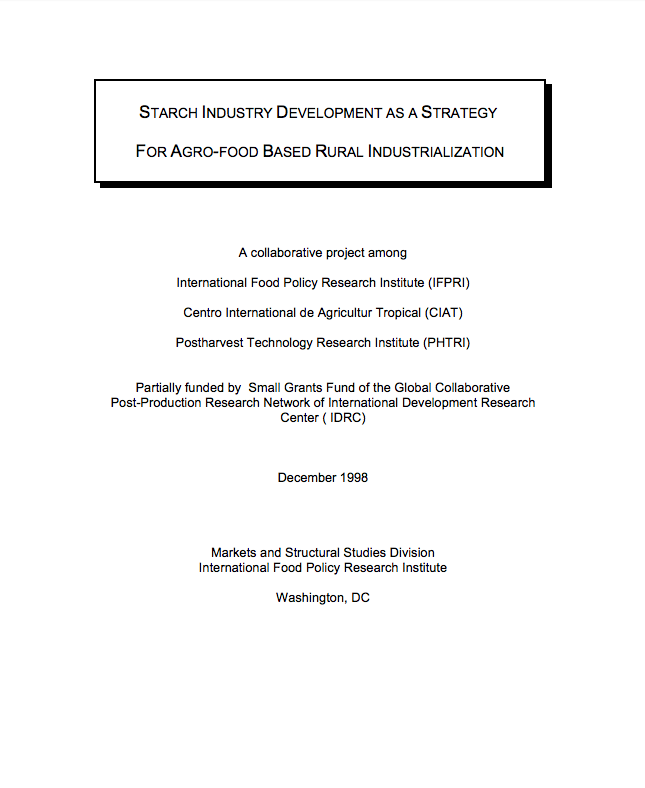Agricultural Education, Science and Modern Technology's Role in Solving the Problems of Global Food Resources in the 21st Century
The growth of agriculture output over the past 200 years has been phenomenal. When Malthus wrote in 1798, he perceived limits on agricultural production as serious and imminent. Since then world population has increased by six-fold and global agricultural production has more than kept pace. Falling real grain prices for most of the 20th Century are cited as evidence. The sources of the increase in food production, however, have been quite different and have come in distinct waves. For most of the 19th century, increased output came from expanded land area in production.
Project GLO/91/013 Annual Report 1998 Ecologically Sustainable Cassava plant protection in South America and Africa: An Environmentally Sound Approach
On the move : mobility, land use and livelihood practices on the Central Plateau in Burkina Faso
Chapter 2 situates the scene by presenting the historical background to the research area. First, a brief outline of the research village's history is provided. The main part of the chapter is devoted to the elaboration of case material relating to a number of conflicts over land, along the border between the kingdom of Ratenga and the kombere of Piugtenga and in which the village of Ziinoogo has been involved.
Réforme agraire: colonisation et coopératives agricoles 1998/1
This issue of Land Reform, Land Settlement and Cooperatives includes interesting descriptions of land tenure and related policies in Uganda, Tunisia, the United Republic of Tanzania and Morocco. Two thought-provoking articles on access to land and other assets focus on policies to reduce poverty and the function of markets in the allocation of production resources. In the first, J. Melmed-Sanjak and S.
Fao Expert Consultation on Policies for Animal Production and Natural Resource Management
The purpose of the expert consulation was to review of current policies that affect the management of livestock and natural resources, focussing on sub-regions and different agro-ecological settings and the identification of policy trade-off. Presentations/resource papers were delivered from each of the five different sub-regions of the Latin American/Caribbean region (Amazon/Brazil; Andean countries/highlands; Central American countries and Mexico; Southern Cone; Caribbean).
Livestock and the Environment - International Conference
One of the greatest challenges faced by mankind is to satisfy the needs of the fast growing global population and at the same time preserve land, water, air and biodiversity resources. Livestock are a crucial element in this balancing process. Demand for livestock products is growing fast, especially in the developing world. Livestock, through their multiple functions, are a cornerstone of the livelihood of most of the rural population in the developing world.
Land Reform in Uzbekistan
FIRST PARAGRAPH OF CHAPTER: Uzbekistan emerged as an independent state in September l99l with a legacy of an undiversified monocultural agriculture heavily specialized in cotton. During the Soviet era, cotton production in Uzbekistan registered persistent gains from the very beginning of collectivization in 1928, often at the expense of wheat and other cereals.
Starch industry development as a strategy for agro-food based rural industrialization
To promote development, there is increasing need for activities and policies which generate and diversify income in rural areas. The starch industry in Viet Nam provides a good example of rural industrialization whereby low-value agricultural commodities such as cassava and canna are processed into high-value commodities such as starch to be used in a variety of food and non-food industries. Though this sector is relatively small, it has a high potential in terms of demand growth, poverty reduction, and income diversification in rural areas, particularly the less favored ones.
Decreto Nº 182 - Reglamenta la Ley Nº 333 de 1996.
El presente Decreto reglamenta la Ley Nº 333 de 1996, en lo relativo a la destinación provisional y asignación definitiva de los bienes rurales con caracterizada vocación rural en favor del Instituto Colombiano de la Reforma Agraria (INCORA), y dicta disposiciones relacionadas con su adjudicación.
Terminology for Integrated Resources Planning and Management
To achieve an integrated approach to the planning and management of land resources, cooperation among experts from the
disciplines involved and integration of the respective results are required in order to identify and evaluate all biophysical, socio-economic and
legal attributes of the land. The glossary aims to contribute to the development of a common technical language. The terms, methods and









